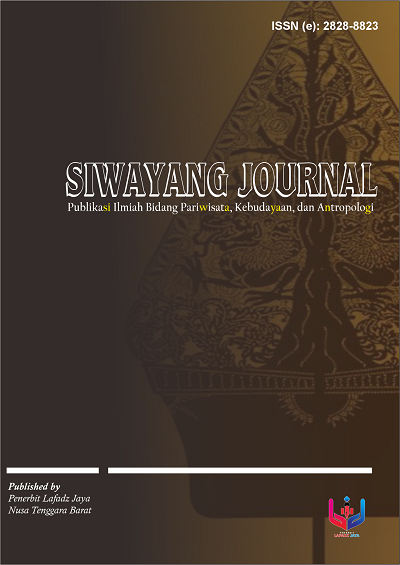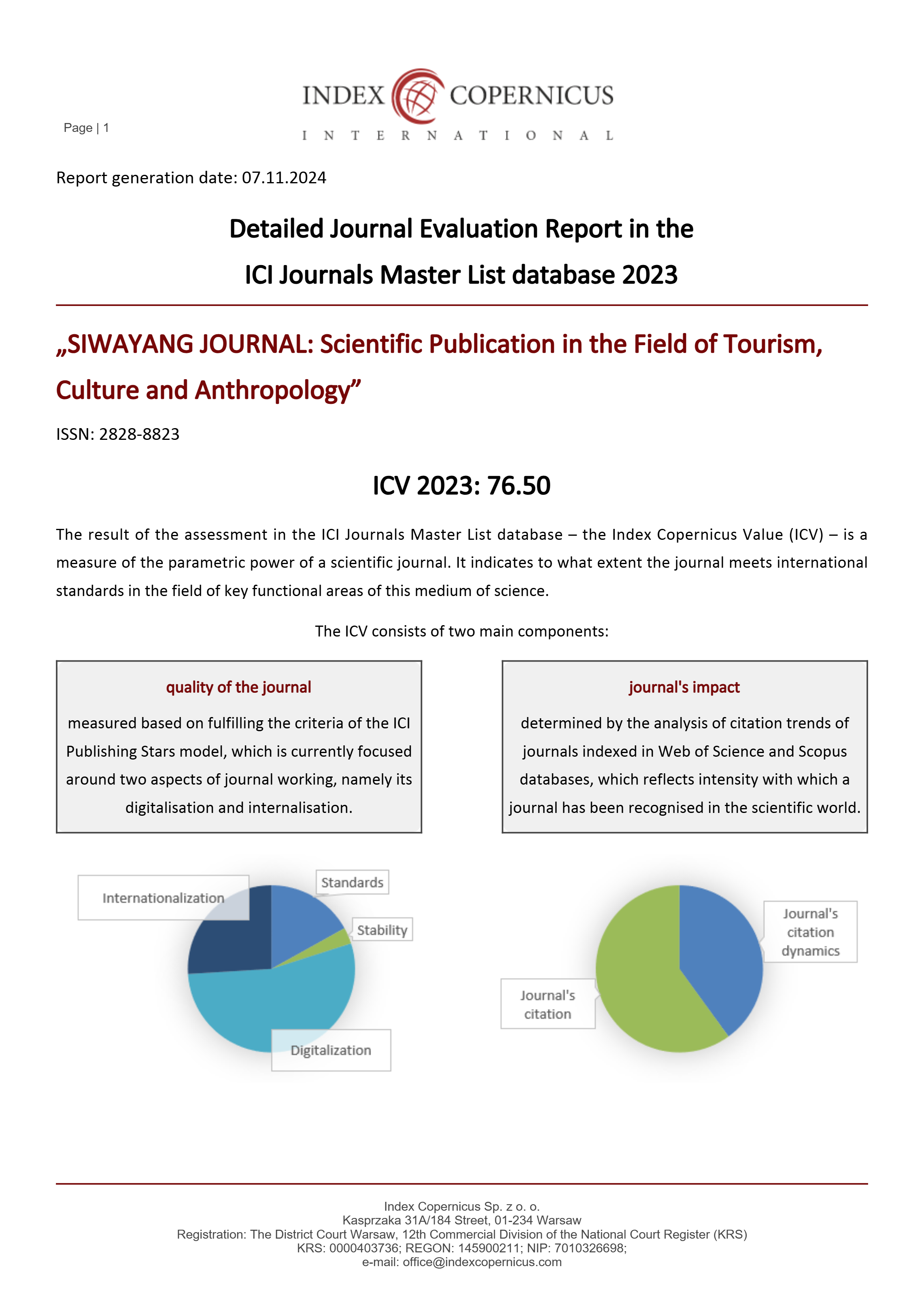UNVEILING TOURISM POTENTIAL FOR SUSTAINABLE ECONOMIC DEVELOPMENT IN ALAMENDAH TOURISM VILLAGE
DOI:
https://doi.org/10.54443/siwayang.v3i3.1733Keywords:
Tourism Villages, Tourism Potential, Economic Sustainability, Local CommunitiesAbstract
The Indonesian tourism industry explores its cultural wealth through the concept of village tourism, a potential that reflects the beauty and authenticity of the local community's life. As a concrete example, Alamendah Village Tourism can leverage its tourism potential to enhance the local economy. Thus, in this context, the research focuses on analyzing how Alamendah Village Tourism recognizes the tourism potential that can improve the economic sustainability of the local community in Alamendah Village. The research employs qualitative research methods as it seeks to understand how Alamendah Village Tourism identifies the tourism potential in its village to enhance the economic sustainability of the local community in Alamendah Village. The results and discussions depict the tourism potential, which is the excellent and admirable human resources in Alamendah Village, creating strategic opportunities to strengthen the local economy with sustainability as the main focus. Therefore, sustainable development is not only about economic growth but also about a wise balance between economic benefits, environmental conservation, and the empowerment of the local community.
Downloads
References
Alkire, S., & Foster, J. (2007). Recuento y medición multidimensional de la pobreza.
AP, A. R., Imron, D. K., & Pertiwi, C. (2020). Tourism village: Challenges and opportunities in new normal. 540–544.
Daly, H. E. (2017). Toward some operational principles of sustainable development 1. In The economics of sustainability (pp. 97–102). Routledge.
Elfiondri, Zaitul, & Rina, N. (2021). Tradition, cultural contact and English for tourism: The case of Mentawai, Indonesia. Heliyon, 7(6), e07322. https://doi.org/10.1016/j.heliyon.2021.e07322
Gunawan, A. N. S., & Amelia, K. P. (2022). Penguatan Pengelolaan Potensi Desa Wisata Alamendah melalui Perencanaan Masterplan Tata Ruang/Guna Lahan. 1(2).
Ha, I., & Grunwell, S. S. (2011). The economic impact of a heritage tourism attraction on a rural economy: The Great Smoky Mountains Railroad. Tourism Analysis, 16(5), 629–636.
Mathew, P. V., & M, N. P. (2022). Sustainable tourism development: Discerning the impact of responsible tourism on community well-being. Journal of Hospitality and Tourism Insights, 5(5), 987–1001. https://doi.org/10.1108/JHTI-02-2021-0052
Nurhayati, Y., Pudjihardjo, Susilo, & Ekawaty, M. (2022). Tourism Village Sustainability Strategy in Malang Regency, Indonesia: Analytical Hierarchy Process and Multidimensional Scaling Approach. In B. S. Sergi & D. Sulistiawan (Eds.), Modeling Economic Growth in Contemporary Indonesia (pp. 319–341). Emerald Publishing Limited. https://doi.org/10.1108/978-1-80262-431-120221019
Parantika, A., Wibowo, F. S., & Wiweka, K. (2020). The Development of Thematic Tourist Village of Mulyaharja Bogor Based on Community Empowerment Approach. TRJ Tourism Research Journal, 4(2), 113–132.
Pickel-Chevalier, S., Bendesa, I. K. G., & Darma Putra, I. N. (2021). The integrated touristic villages: An Indonesian model of sustainable tourism? Tourism Geographies, 23(3), 623–647. https://doi.org/10.1080/14616688.2019.1600006
Sen, A. (1999). On ethics and economics. OUP Catalogue.
Tisdell, C. (2001). Globalisation and sustainability: Environmental Kuznets curve and the WTO. Ecological Economics, 39(2), 185–196.
Downloads
Published
How to Cite
Issue
Section
License
Copyright (c) 2024 Anisya Nur Fatin, Ghina Askhiya, Mutia Rosyifa, Rini Andari, Aan Khosihan

This work is licensed under a Creative Commons Attribution-NonCommercial 4.0 International License.











